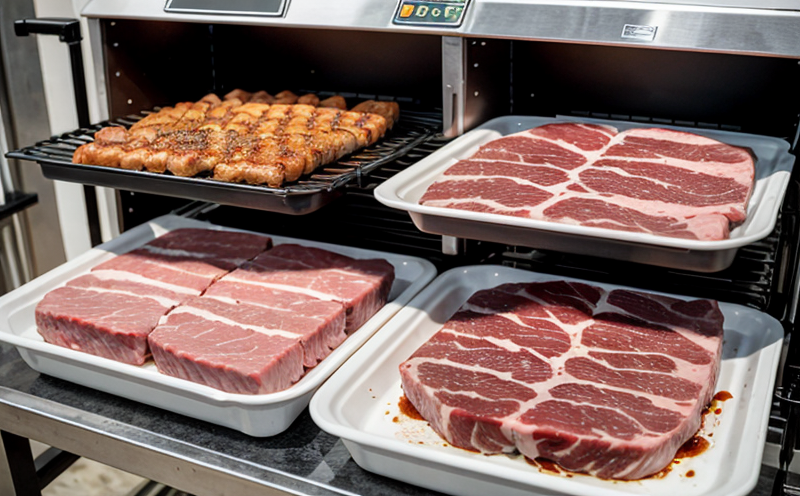ISO 55682 Shelf Life Evaluation in Processed Meat
The ISO 55682 standard provides a robust framework for evaluating the shelf life of processed meats, ensuring that products remain safe and palatable over extended storage periods. This service is particularly crucial for meat processors and food manufacturers who aim to comply with international quality standards while safeguarding public health.
Shelf life evaluation involves determining the maximum period during which a product can be stored under specific conditions without losing its safety, nutritional value, or sensory characteristics. For processed meats, this includes factors such as microbiological stability, chemical composition, and organoleptic properties (appearance, texture, aroma).
The ISO 55682 protocol focuses on the chemical and physical changes that occur in processed meat during storage. These changes can lead to spoilage, which may result from microbial growth, lipid oxidation, or enzymatic activities. The standard offers a comprehensive approach by detailing how to conduct microbiological analyses, monitor chemical parameters like pH and total volatile basic nitrogen (TVBN), and assess the sensory attributes of the product.
The process begins with the selection of appropriate storage conditions that mimic real-world scenarios, such as temperature, humidity, and exposure to light. Specimens are then stored under these conditions for varying durations, typically ranging from a few days up to several months, depending on the initial expected shelf life. Microbiological analyses involve culturing samples at regular intervals to observe bacterial growth or presence of pathogens like Salmonella and Listeria.
Chemical analysis includes measuring changes in pH levels, which indicate potential spoilage due to microbial activity. TVBN is another critical parameter as it reflects the extent of protein breakdown leading to off-flavors. Additionally, lipid peroxidation products can be detected using analytical techniques like gas chromatography or spectrophotometry.
Sensory evaluations involve assessing changes in color, texture, and aroma through trained panelists who compare fresh versus aged samples. This qualitative assessment helps quantify the extent of sensory degradation.
| Applied Standards | Description |
|---|---|
| ISO 55682:2019 | This standard provides guidelines for determining the shelf life of processed meats, including methodologies and acceptance criteria. |
The results from these evaluations are synthesized into a report that outlines the shelf life under specified conditions. This information is invaluable for manufacturers in optimizing product formulations, packaging choices, and distribution strategies to extend freshness while maintaining safety standards.
By adhering to ISO 55682, food processors can ensure their products meet stringent quality control measures, thereby enhancing consumer trust and regulatory compliance.
Applied Standards
| Standard | Description |
|---|---|
| ISO 55682:2019 | This standard provides guidelines for determining the shelf life of processed meats, including methodologies and acceptance criteria. |
Benefits
- Ensures compliance with international quality standards.
- Maintains product safety and efficacy over extended storage periods.
- Reduces the risk of recalls due to microbial contamination or spoilage.
- Safeguards public health by preventing consumption of potentially harmful products.
Environmental and Sustainability Contributions
- Minimizes waste through accurate shelf life determination, reducing overproduction.
- Promotes efficient use of resources by optimizing storage conditions to extend product longevity.
- Supports sustainable practices in the food industry by enhancing product quality and reducing environmental impact.





